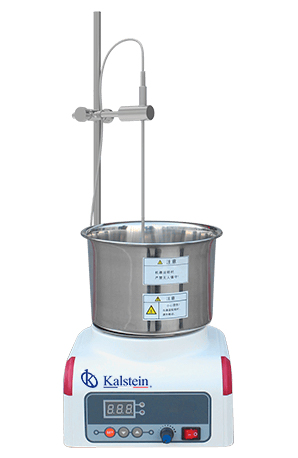A water bath is a laboratory equipment consisting of a container filled with hot water, used to incubate samples in water at a constant temperature for a long period of time.
Among its main uses we have the heating of reagents, fusion of substrates or incubation of cell cultures. It is also used to carry out certain chemical reactions that occur at high temperatures. The water bath provides a uniform source of heat that allows flammable chemicals to be heated instead of an open flame and thus avoid contact. Different types of water baths are used depending on the application and user requirements, taking into account that all water baths can be used up to 99 °C. When the temperature is above 100 °C, there are other alternative equipment such as oil bath.
How is a bain-marie composed?
The water baths have an analog or digital interface, which allows users to set the desired temperature. They are made up of:
- Tank: Normally made of stainless material, which has a set of electrical resistances in its lower part, through which heat is transferred to the water, which is maintained at a preselected temperature through a control device that allows selecting the required temperature. The resistances of the water baths can be of two types: immersion or external.
- Impeller tray: This element of the equipment serves as a support for the containers that are placed in the laboratory water bath. This should be placed at the bottom of the device.
- Cover: This is an area that is outside the equipment and covers the bain-marie. This is usually where the temperature controls are located, which constantly regulate and adjust the temperature. This cover is normally made of steel and is covered with electrostatic paint with high adherence and resistance to the laboratory environment.
- Thermometer: This device allows you to measure the temperature of the water.
Types of laboratory water baths
- Water bath with circulating water: In this type of water bath, the water circulates through all the equipment, providing a more uniform temperature. This is necessary when high temperature uniformity and consistency is required, such as in some enzyme or serological assays.
- Water bath with non-circulating water: In this water bath, heat transfer is done by convection. But it has the disadvantage that temperature control is less precise. Although some equipment has accessories that allow non-circulating agitation in order to generate a more uniform heat transfer.
- Water bath with agitation: These water baths have an additional control that allows stirring and thus moving the substances inside the equipment. It is very practical in microbiology laboratories, where cell and bacterial cultures need to be constantly shaken.
- Oil bain-marie: These types of baths differ from those that use water, in that the temperatures in these equipment can reach up to 200 °C. And oil is used instead of water, since water evaporates faster.
At Kalstein we are MANUFACTURERS of laboratory equipment of the highest quality, and we offer you excellent laboratory water baths at the best PRICES on the market. That is why we invite you to take a look at our product catalog: HERE

